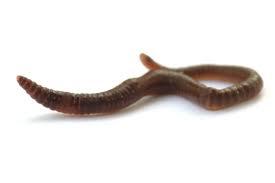The annelids or ringed worms are a large phylum of segmented worms, with over 17,000 modern species including ragworms, earthworms and leeches.
They are found in marine environments from tidal zones to hydrothermal vents, in freshwater, and in moist terrestrial environments.
Classes within Annelida:
Class Polychaeta
Class Clitellata
- Oligochaeta – earthworms
- Branchiobdellida
- Hirudinea – leeches
Class Myzostomida
Class Archiannelida
Morphology
The basic annelid form consists of multiple segments, each of which has the same sets of organs and, in most polychaetes, a pair of parapodia that many species use for locomotion. Septa separate the segments of many species, but are poorly-defined or absent in some, and Echiura and Sipuncula show no obvious signs of segmentation. In species with well-developed septa, the blood circulates entirely within blood vessels, and the vessels in segments near the front ends of these species are often built up with muscles to act as hearts. The septa of these species also enable them to change the shapes of individual segments, which facilitates movement by peristalsis or by undulations that improve the effectiveness of the parapodia. In species with incomplete septa or none, the blood circulates through the main body cavity without any kind of pump, and there is a wide range of locomotory techniques – some burrowing species turn their pharynges inside out to drag themselves through the sediment.
Reproduction
Although many species can reproduce asexually and use similar mechanisms to regenerate after severe injuries, sexual reproduction is the normal method in species whose reproduction has been studied. The minority of living polychaetes whose reproduction and lifecycles are known produce trochophore larvae, which live as plankton and then sink and metamorphose into miniature adults. Oligochaetes are full hermaphrodites and produce a ring-like cocoon round their bodies, in which the eggs and hatchlings are nourished until they are ready to emerge.
Feeding
Earthworms support terrestrial food chains both as prey and by aerating and enriching soil. The burrowing of marine polychaetes, which may constitute up to a third of all species in near-shore environments, encourages the development of ecosystems by enabling water and oxygen to penetrate the sea floor.
In addition to improving soil fertility, annelids serve humans as food and as bait. Scientists observe annelids to monitor the quality of marine and fresh water. Although blood-letting is no longer in favor with doctors, some leech species are regarded as endangered species because they have been over-harvested for this purpose in the last few centuries. Ragworms' jaws are now being studied by engineers as they offer an exceptional combination of lightness and strength.
Ecological relevance
Charles Darwin's book The Formation of Vegetable Mould through the Action of Worms (1881) presented the first scientific analysis of earthworms' contributions to soil fertility. Some burrow while others live entirely on the surface, generally in moist leaf litter. The burrowers loosen the soil so that oxygen and water can penetrate it, and both surface and burrowing worms help to produce soil by mixing organic and mineral matter, by accelerating the decomposition of organic matter and thus making it more quickly available to other organisms, and by concentrating minerals and converting them to forms that plants can use more easily. Earthworms are also important prey for birds ranging in size from robins to storks, and for mammals ranging from shrews to badgers, and in some cases conserving earthworms may be essential for conserving endangered birds.
Marine annelids may account for over one-third of bottom-dwelling animal species round coral reefs and in tidal zones. Burrowing species increase the penetration of water and oxygen and water into the sea-floor sediment, which encourages the growth of populations of bacteria and small animals alongside their burrows.
Although blood-sucking leeches do little direct harm to their victims, some transmit flagellates that can be very dangerous to their hosts. Some small tube-dwelling oligochaetes transmit myxosporean parasites that cause whirling disease in fish.
http://hu.wikipedia.org/wiki/Gy%C5%B1r%C5%B1sf%C3%A9rgek
http://eki.sze.hu/ejegyzet/ejegyzet/biologia/rendszer/node51.htm
